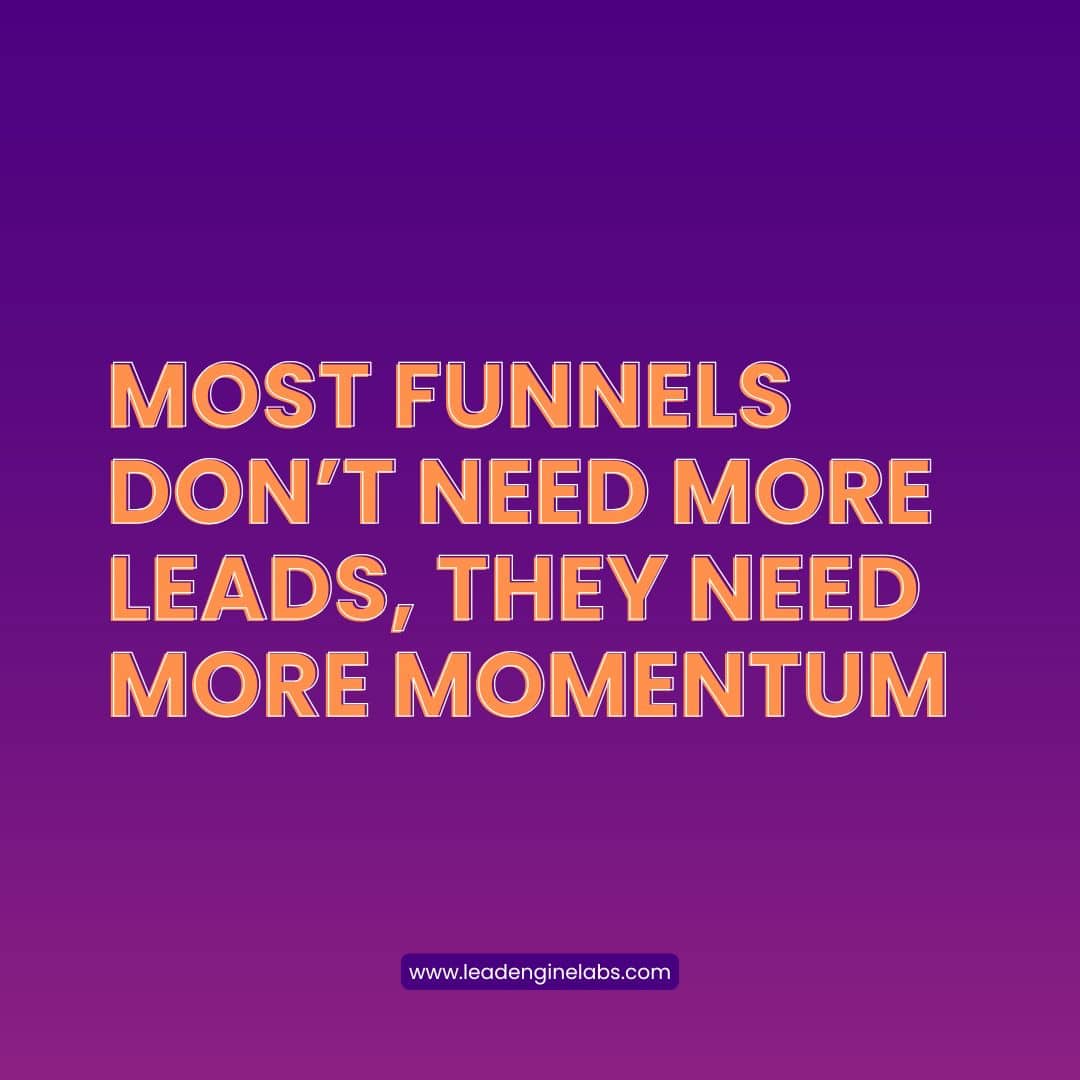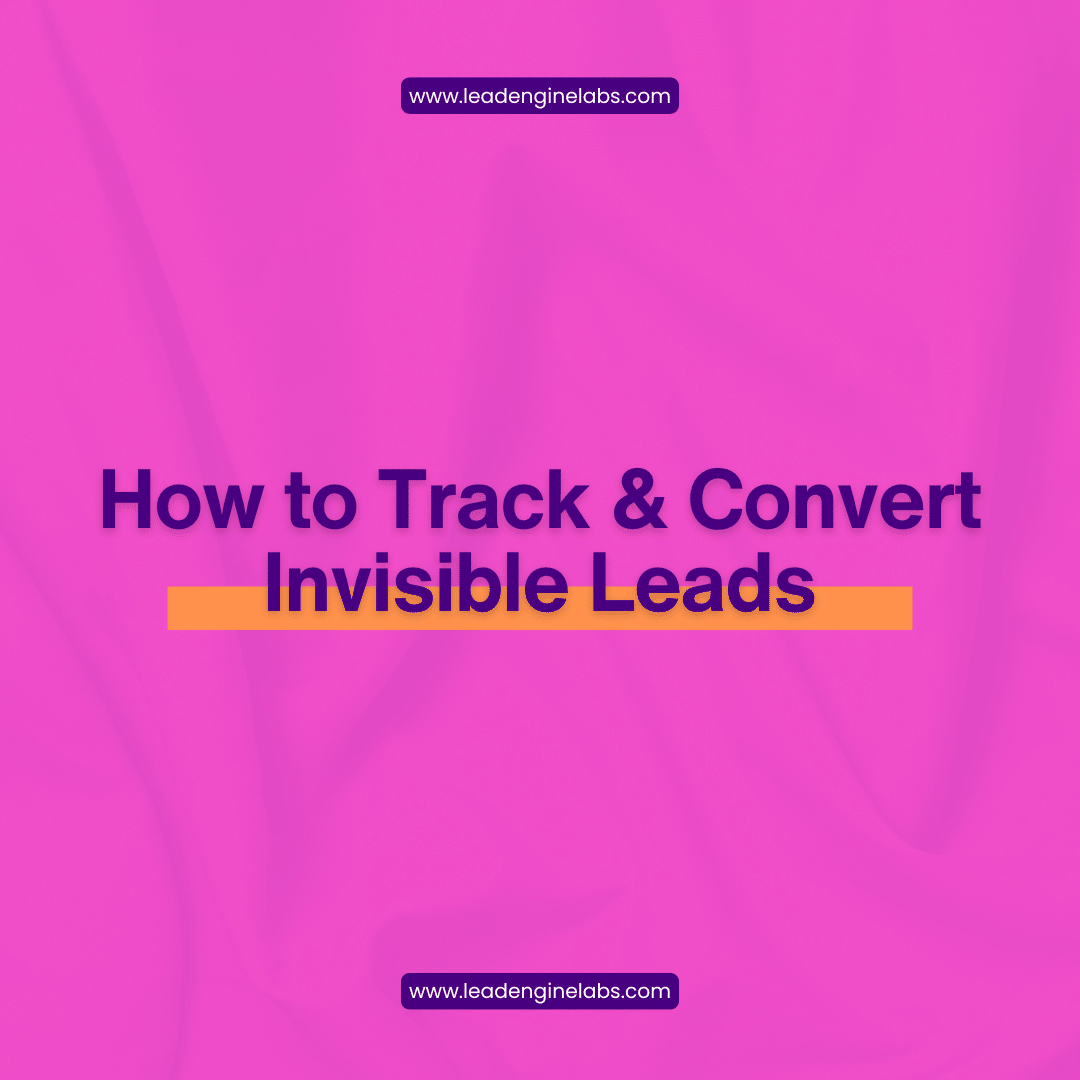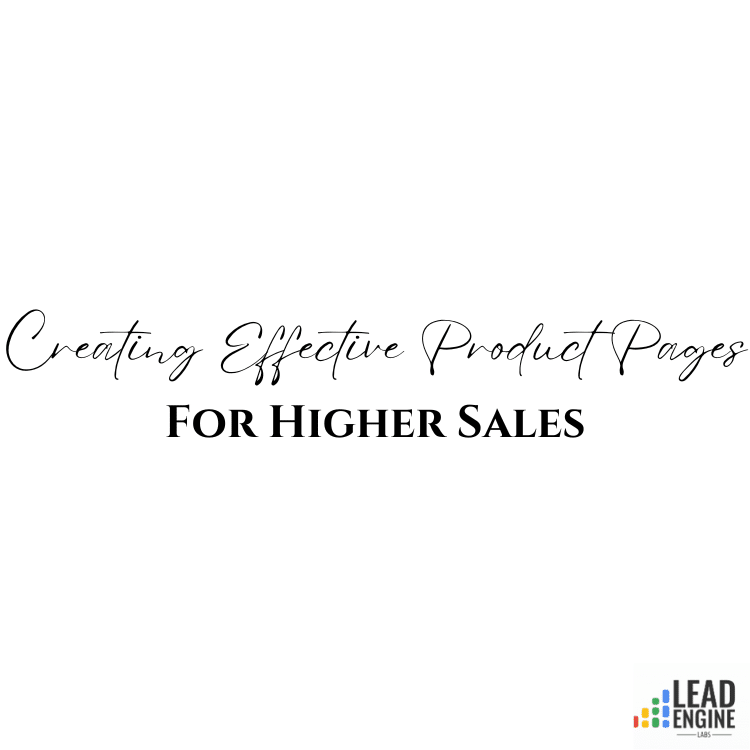When pipeline growth stalls, most businesses default to one idea:
“We need more leads.”
So they spend more on ads. Send more cold emails. Push more traffic into the top of the funnel.
But here’s the truth most won’t admit—the problem isn’t volume. It’s movement.
Most funnels aren’t starving. They’re bloated with stuck leads—deals that enter but never progress. They don’t move to the next stage. They ghost after discovery. They vanish mid-proposal.
This post is about fixing that.
Because if you solve momentum, you don’t just improve conversions—you unlock scale without burnout.
Why Your CRM Isn’t Converting Leads (And What to Do About It)
The Real Cost of a Stalled Funnel
When leads stall:
- Sales cycles drag out
- Close rates drop
- Reps waste time chasing ghosts
- Marketing gets blamed for “bad leads”
- Growth flatlines
And worse—you stop trusting your process.
But in most cases, the leads aren’t bad. The system just isn’t built to keep them moving.
What Causes Funnels to Stall?
It’s rarely one thing—it’s usually a mix of friction points that build up over time.
Here are the most common momentum killers:
1. Unclear Next Steps
A lead books a call, hears the pitch… and then nothing. No urgency. No follow-up plan. Just silence.
2. Weak Mid-Funnel Content
You’ve got great TOFU content and solid CTAs. But once the lead is in, there’s nothing pulling them forward—no strong case studies, no ROI calculators, no demo hooks.
3. Inconsistent Follow-Up
Most deals don’t die—they just drift. Sales reps get busy. Emails don’t get answered. The lead doesn’t say no—they just fade.
4. Offer Misalignment
The CTA doesn’t match the buying stage. You’re pushing demos on leads who aren’t ready, or sending ebooks to people ready to buy.
5. No Trigger-Based Engagement
You’re waiting for leads to “raise their hand” instead of building systems that react when they show interest—like revisiting the pricing page or re-opening your last email.
Step 1: Redesign the Funnel for Movement, Not Just Capture
Most funnels are designed to get the lead in—not to move them forward. That’s backwards.
You need a funnel that escorts the lead stage-by-stage, removing friction and building conviction.
How to Build Momentum-Driven Funnels:
- Map each stage of your funnel to a specific behavior (not just time).
- Define a clear next action for every stage.
- Use timed sequences + behavior-based triggers to keep deals from going cold.
Example:
- TOFU download → auto-send follow-up with “what most companies get wrong about X”
- Viewed case study → trigger “Want a similar result?” message
- Revisited pricing page → personalized message from sales within 1 hour
Funnels should feel like movement, not memory tests.
Step 2: Rework Your Mid-Funnel Game
TOFU content gets leads in the door. BOFU content closes deals.
But most funnels flatline in the middle—because mid-funnel content is either missing or generic.
Here’s what strong mid-funnel assets actually do:
- Reduce perceived risk
- Build trust via proof (e.g. case studies, testimonials)
- Clarify ROI or value metrics
- Make next steps feel frictionless
What to build:
- Short Loom videos explaining how your service works
- Visual case study breakdowns (before/after, KPIs)
- ROI calculators
- 2-minute founder pitches for why the product exists
- Offer teardowns (e.g. “Here’s exactly what you’ll get after the call”)
Movement needs clarity. If the lead isn’t sure what’s next, they stay still.
Step 3: Fix the Follow-Up Cadence
Follow-up is where most funnels quietly die.
You get busy. Or you assume “they’re not interested.” Or the CRM says it’s been handled. And then the lead disappears.
Here’s a simple rule: if you’re not following up, you’re not closing.
Best practices:
- Follow up within 5–10 minutes of high-intent behavior
- Use 5–7 touch sequences minimum
- Vary the medium (email, call, LinkedIn, retargeting)
- Add context to every follow-up (“Saw you re-opened our proposal…”)
Follow-up should feel like a conversation, not a campaign.
Step 4: Use Triggers to Nudge Movement
Momentum isn’t just about what you say. It’s about when you say it.
Trigger-based marketing keeps your funnel alive by reacting to real behaviors. Think:
- Page visits
- Email opens/clicks
- Demo no-shows
- Inactivity for X days
Build smart nudges:
- “Saw you checked out our pricing again—happy to clarify anything for you.”
- “Noticed you didn’t book after the webinar—would a quick call help?”
- “It’s been a few weeks since we last spoke—have priorities shifted?”
Timing beats volume. Every time.
Step 5: Pressure-Test Your Offers
Sometimes the issue isn’t the lead or the follow-up. It’s the offer.
Here’s how to test it:
- If 10 people book a call, how many move forward?
- Do people know exactly what happens after the call ends?
- Are you asking too much, too soon (e.g. demo vs strategy call)?
Strong momentum comes from strong offers. Not just in what you say—but in how you present the path forward.
If the offer isn’t clear, exciting, or relevant, the lead stalls. No matter how good the funnel is.
Step 6: Review Stuck Deals Monthly
Leads that stall are data. You can either ignore them—or study them.
Every month, pull a report:
- Leads who haven’t moved in 30+ days
- Discovery calls with no follow-up activity
- Proposals sent but not signed
Then diagnose:
- Was the timing off?
- Was the offer unclear?
- Was the next step missing?
Send a reactivation message that speaks directly to the reason they stalled.
Sometimes momentum just needs a spark.
Conclusion: Momentum Is the Funnel Multiplier
You don’t need more leads.
You need a system that keeps the right ones moving.
Fix the friction. Tighten the timing. Strengthen the middle. Build offers that pull people forward.
At Lead Engine Labs, we help B2B companies stop wasting pipeline potential and start turning traffic into traction.
If you’re tired of stuck deals and slow movement, let’s talk.



